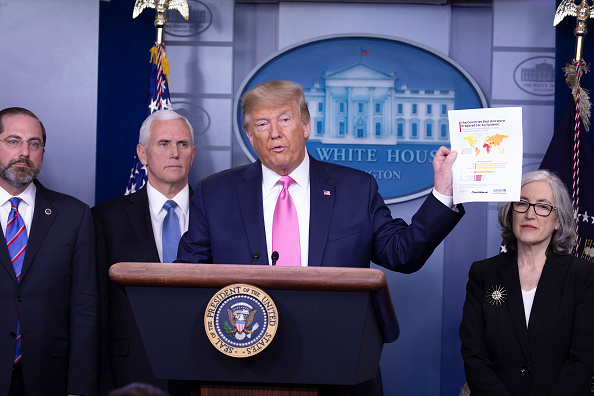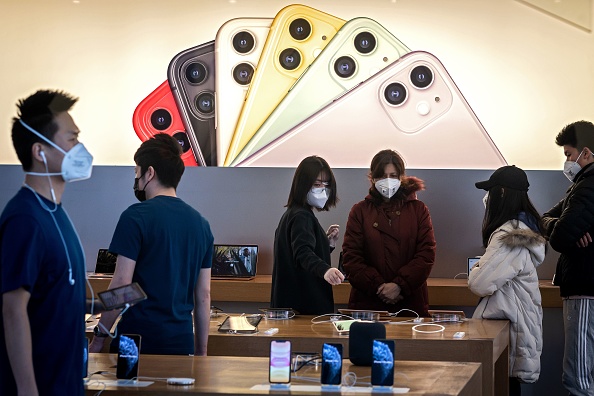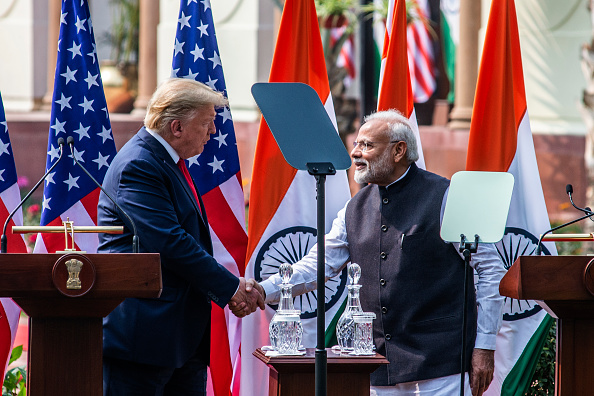
 Coronavirus Gone Global
Coronavirus Gone GlobalDespite a slowdown in new infections in China, the spread of the coronavirus has accelerated around the world, causing widespread fear and concern. Markets just had their worst four days since the 2008 financial crisis, with the Dow Industrial Average plummeting 13% from its most recent high. What was once a problem for Hubei province alone has effectively gone global.
Facing widespread criticism over his handling of the epidemic, President Trump has delegated responsibility to Vice President Pence, just as allegations surfaced that medical teams were not properly trained or outfitted when dealing with Americans possibly exposed to the coronavirus. According to a whistleblower's complaint, some American medical personnel moved freely into the public after possible exposure to the disease. The Center for Disease Control (CDC) has since confirmed a coronavirus patient who didn't travel outside the country or come into contact with anyone infected.
Quashing speculation that the coronavirus would derail China's promises in the Phase One trade deal, China has lifted import restrictions on U.S. agriculture products as part of a deal that requires China to increase its purchase of farm products by $32 billion over a two-year period. "The virus outbreak is likely to have a negative impact on consumption and industry, driving down commodity prices, including important elements of the purchase commitments, such as soybeans and energy products. The longer the crisis lasts, the worse the damage to China's ability to meet its commitments,' writes Dr. Chris McNally in his latest article for China-US Focus.
 Out of Stock
Out of StockChina may be the factory of the world, but global supply chains have suffered since China's manufacturing sector has been largely shut down in an effort to contain the coronavirus outbreak. Now, however, there are signs that Chinese manufacturing is sputtering back to life. Since some Chinese factories began restarting their assembly lines last week, key metrics of economic health have been on the rise and a number of commercial businesses have reopened. Even so, experts say that production may be months away from returning to normal after factories have been closed, transportation routes hobbled, and over 60 million people quarantined at the heart of the coronavirus outbreak.
With China's factories down, global companies throughout most industries are struggling to repurpose their supply chain lines to keep up with demand. Smartphone production is hovering around 10% of its previous output, with Apple cutting its sales forecast for this quarter. Amazon.com sellers are also facing inventory problems and struggling to fulfill demand, and facing demotion in the marketplace's online rankings as a result. And although some are cheering the reopening of China's factories, "it is difficult to predict whether China's cautious reopening of closed firms will prove wise or lead ultimately to a longer and more disruptive outbreak," writes Ben Reynolds for China-US Focus.
 'Namaste Trump' and 'Howdy Modi'
'Namaste Trump' and 'Howdy Modi'President Trump traveled to India this week to meet with Prime Minister Modi and deepen the U.S.-India relationship in what some experts are calling a hedge against the rise of China. Despite significant tensions in the trade and human rights domain of the U.S.-India relationship, the geopolitics behind the U.S. Indo-Pacific Strategy has kept the relationship warm. India has agreed to strengthen military cooperation with the United States, as well as further intelligence sharing.
With high popularity in India, Trump used the visit to shore up support for U.S. technology, particularly in the realm of 5G infrastructure as Washington grows increasingly antagonistic towards Huawei and other Chinese technology companies. New Delhi finds itself torn between the U.S-China race to lead in next generation mobile networks, but could use support from Washington to leverage concerns over the $53 billion trade deficit it has with China, according to Patrick Mendis and Joey Wang for China-US Focus.
Some are calling the 36-hour trip, which only included a single one-on-one meeting between the two presidents and relatively minor agreements, an effort to primarily boost international optics for the two countries.While some in India were hopeful a trade deal might come to fruition, any progress on a comprehensive agreement has been pushed into the future.
Prepared by China-US Focus editorial teams in Hong Kong and New York, this weekly newsletter offers you snap shots of latest trends and developments emerging from China every week, while adding a dose of historical perspective.
- 2020-02-22 The Virus Continues
- 2020-02-15 Asserting Control
- 2020-02-08 A Novel Outbreak
- 2020-01-31 Global Health Emergency Declared
- 2020-01-24 Celebrations Grounded
- 2020-01-17 Signed, Sealed, Delivered
- 2020-01-10 Ink the Deal
- 2019-12-20 A Level Playing Field
- 2019-12-13 It’s a (Limited) Deal!
- 2019-12-06 An Arbitrary Deadline
- 2019-11-22 On or Off Again?
- 2019-11-15 Counterweight Critique
- 2019-11-08 "I haven't agreed to anything"
- 2019-11-01 Don’t Hold Your Breath
- 2019-10-25 Weaponizing Diplomacy
- 2019-10-18 Economic Shudders
- 2019-10-11 A “Big Day of Negotiations”
- 2019-10-04 Birthday Celebrations
